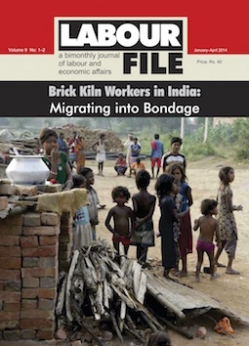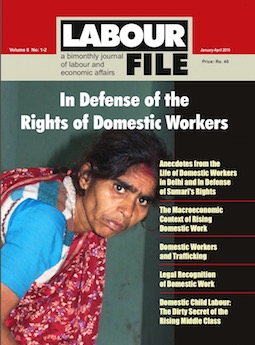Labour and Social Transformation
J John is Editor, Labour File. Email: jjohnedoor@mac.com . (J John)
The Economic Survey 2002-2003 notes that the number of industrial strikes and lockouts came down by half to 321 during the first nine months of 2002 from 674 in the previous year. Up to September 2002, industrial strikes dipped to 142 from 372 in 2001. Provisional information provided by the Labour Bureau confirms this trend in 2003 too.
The declining strike rate raises three important questions. Has labour, in particular the organised sector, become less militant (assuming that strike is the most important barometer to measure the militancy of workers)? Has the organised sector labour lost its potential to assume a lead role in social and political transformation? Has labour lost its capacity to pursue the social and political construction of solidarity, particularly in the absence of unifying ideologies? It would be interesting to pursue these questions from the experiences of Indian labour in 2003.
The year 2003 started off with the united struggle of workers against the privatisation of Singareni coal mines in Andhra Pradesh. By the time the struggle ended in February, workers not only managed to protect their rights but also to stall the hurried privatisation of the mines. Most of the reported struggles of the workers in 2003 were against privatisation of public sector companies. Notable among other such struggles were the strike by workers of ITIs in Punjab against the move by the Punjab government to privatise 12 ITIs in the state; struggle of workers of the National Fertilizers Corporation at Nangal , Punjab to protest against the proposed disinvestment of the company; struggle of employees of the Fertilizers and Chemicals Travancore (FACT) against privatisation and the workers laid a siege to the Udyogamandal division of the company protesting the visit of officials from the Indo-Gulf Fertilizer Corporation to inspect the facilities; strike by junior doctors of 10 government medical colleges in Andhra Pradesh against the privatisation of medical education and hospital services in the state, including the Civil Hospital built in the memory of Jallianwala Bagh martyrs; workers belonging to HPCL and BPCL holding nationwide strike in August to oppose the privatisation of the two oil PSUs and HPCL employees prevented Reliance Industries officials from entering HPCL’s refinery premises in Mumbai.
The year 2003 also witnessed unprecedented attempts at forging unity of workers at the national level against the forces of globalisation. All the major trade unions of the country, except the Bharatiya Mazdoor Sangh (BMS), mobilised thousands of workers for the march to Parliament in
However, most of these struggles were from the public sector enterprises. Individual struggles, including strikes were reported from the
The above instances show that workers are not docile. Labour militancy should be seen in relation to the socio-political context in which they are placed today. The occupational, sectoral and social composition of the labour force has changed in a way detrimental to the interests of labour. Aggressive strategies by the government and the employers have weakened labour’s bargaining position. Employers have largely taken over the initiative in an enterprise by imposing new enterprise-oriented frameworks and thereby curtailing democratic space for workers.
In this context, labour’s defensive strategy could be an energy conserving mechanism. Historically, labour militancy has been explained to be moving in cycles. It has a positive correlation with increasing repression and labour becomes militant as repression increases.
Labour construct solidarity largely through its engagement with the employer and the state, by either taking a confrontationist position or being accommodative. Similarly, labour interacts with society either in a leadership role or in a partnership role. In these engagements labour builds solidarity with other labour organisations or other forces in society.
Over a period of three to four decades, the environment in which labour finds itself has changed significantly in
Very few studies have been made to understand how labour, in the above mentioned context, construct and deconstruct labour solidarity and struggles in
It would be too early to predict the decreasing militancy of labour and the irrelevance of labour in social transformation. Moreover, there are signs of an engagement between labour organisations and other actors like dalit movements, peace movements, environmental movements, women’s movements, movements of victims of development, people’s science movements, student movements, youth movements and NGOs in
The current issue of Labour File captures glimpses of labour scene in
Title of the Article: Labour and Social Transformation
Name of the Journal: Labour File
Volume & Issue: 2 , 1
Year of Publication: 2004
Month of Publication: January - February
Page numbers in Printed version: Labour File, Vol.2-No.1, Labour in 2003 (Editorial - Labour and Social Transformation - pp 1-4)
Weblink : https://labourfile.com:443/section-detail.php?aid=62




.jpg)
.jpg)


